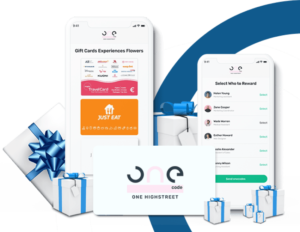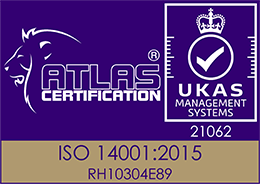Customer loyalty is hard to come by the digital world. However, given the ease with which customers can now share their experiences with a large digital audience, some say that customer experience is the new marketing, and it may be. Reviews spread quickly, friends and family rely on each other’s opinion, and shared customer experience is a powerful influencer, handing organisations a considerable amount of potential prominence – both positive and negative.
Every company operating with a customer facing network of social media, websites and online directory listings has more opportunity than ever to maximise exposure of its ability to meet customer expectations – and the first step is creating a customer experience which people want to share.
In a fast changing world, customer loyalty is becoming difficult to achieve and maintain – customers can switch products and services in the blink of an eye, and people expect a ‘perfect fit’ for their money, so extending the customer lifetime is about providing services that feel personal.
Evolving the customer experience can be a simple process, using rewards and loyalty techniques to transform the way you reach and connect with individuals, setting your service apart from other brands.
Why?
The simple answer is that most companies still don’t focus on customer loyalty or user journey, and a carefully crafted customer experience offers a preferable journey for which customers will switch, share and recommend.
Establishing some truths about the customer experience journey helps us design programs that exceed user expectations – and create a one of a kind customer experience for each person – by delivering on a brand promise, rewarding purchases, making mundane transactions more pleasant and doing it with flair.
Let’s explore the reasons customers leave, discover the pivotal moments in their journey and learn how to effectively influence them for loyalty.
Why Do Customers Leave?
Cultural changes have a real effect on the way people interact with brands and must be addressed in a manner that allows for relevant continued development, but there are organisational issues too, which call for a change in service delivery.
Companies fail to meet customer expectations
A competitive offering, functional website, great service, quality products and aftercare are the very basic elements that breed customer loyalty. Without these crucial ingredients, customers won’t continue to choose a brand that is difficult to contact or purchase from. A short survey before the launch of a loyalty program can identify customer expectations and how they may be met.
Absolute Transparency Personal transactions are no longer personal. Stories of service failures, better prices, alternative offers and other information, which brands might not otherwise advertise, is readily available. Thanks to social media, online reviews and forums mean that customer issues and their resolutions are now very public and therefore influential on existing and potential customers.
Customer Identifies No Unique Relevance Customers’ favourite organisations tend to stand out from the crowd somehow – that’s why customers don’t stray. If there’s nothing unique separating a company from the crowd, customers will forget about it and move on – but there’s no reason an amazing customer journey can’t be the stand out factor.
No Loyalty Program Did you know that a reward scheme encourages a third of people to be more loyal, makes 70% modify where and when they shop, and makes 84% of retailers more likely to visit their site? Rewards are powerful, and if customers can get them elsewhere, they most likely will.
Thoughtless Customer Experience Sitting back and letting the customer experience look after itself is no longer enough – customers want to be taken on a journey with the services and products they use and if the customer experience isn’t up to scratch, they migrate.
The Customer Experience
We identify the customer experience as the entire interaction between customer and organisation, and there are several complex moments in the journey, including:
• Customer awareness • Attraction • Acquisition • Advocacy • Purchase • Recovery in the event of a service error
These are the key moments – the ones which are memorable – in which loyalty can be secured by making a positive connection because emotional energy is running high; there’s a driving spark when people are on the lookout for a new product, when they buy an item they want, when something goes wrong.
Capturing that emotional energy at a variety of stages was called the Moment of Truth in a McKinsey & Co study. Their research found that superb handling of emotional energy, which put the customer’s emotional needs ahead of company and employee agendas, earned customer trust and loyalty. McKinsey & Co also reference emotional intelligence and investing in creating an emotional bond with the customer throughout the less ‘humdrum’ transactions as reasons that people choose to make repeat purchases with a company.
What’s Important to Customers
Appealing to what’s important to customers, by building a customer journey that provides the moments they look for, is the most successful way to create valuable emotional connections when they count.
Transforming Each Leg of the Journey
To transform the customer experience from start to finish, each leg of the journey should set the brand apart with a moment which is memorable, has a purpose, and meets customer expectations.
The same gesture won’t create a spark at customer acquisition stage and again in the case of service recovery.
Each moment must have its own identity in the customer’s mind. Since it’s possible that one customer may experience every effort at the Acquisition, Retention and Recovery stages, each must be original.
As such, each leg of the customer journey – each moment where the customer is emotionally invested – must be moulded to make the most of that investment.
The clearest way to acknowledge customer needs and expectations, or create a memorable Moment of Truth, is with a gesture of goodwill.
A gift, enrolment in a loyalty program or another type of reward, recognition of personal circumstances and in the case of a service failure, taking responsibility for mistakes are the most successful ways to reach a customer.
Use services designed specifically for purpose and create the perfect journey for maximising loyalty by making each moment memorable.
Customer Acquisition
Potential customers can be routine switchers, looking for the best deal for the service or product they’re looking for; others are open to a better deal and still others simply plump for the option that gives them the most in return.
The majority of people shop around to get the most out of rewards, so offering a sign-up gift sets your brand apart from the get go, starting the relationship with a positive memory customers can call upon when shopping around or recommending services to friends.
It’s also a way to say thanks for choosing you, and sets the scene for the kinds of rewards your new customers can expect to receive further down the line. Another variation of the scheme is to offer existing customers rewards for referring their friends, which is another direction for loyalty rewards and can mean influential promotion, particularly on social media.
Essentially, Acquisition programs also allow you to identify your most valuable customer, and attract more of them by rewarding for selected service sign up – people associate with others who are just like them in terms of income, lifestyle and spending habits.
How Does it Work?
Acquisition schemes increase short term growth by offering enticing rewards for the people who choose your services, and the existing customers who refer them. • Run the program in short term bursts to complement a new product or service, or long term for an all-round acquisition drive across your range of services.
• Offer tangible sign-up rewards in the form of gifts or vouchers sent straight to qualifying customers, or
• Send a digital gift code to qualifying customers by email or SMS, inviting them to visit your company branded site where they can select a gift of choice, or
• Empower choice by awarding reward points to existing customers who refer their friends, then invite them to save and check points on your company branded site and redeem against a gift of choice.
Rewarding Loyalty
Most brands recognise customer retention as one of their biggest challenges. When it comes to designing a great customer experience, rewarding frequently with an inexpensive solution can significantly improve satisfaction levels and extend the customer lifetime.
Offering rewards for every transaction can improve sales in terms of total spend, buying patterns and frequency of visit, since almost three quarters of customers shop around based on the rewards available, and consciously remain loyal to those brands that offer generous rewards.
Loyalty isn’t just communicated through purchasing patterns either; emerging research shows customers increasingly express their brand preferences online using social media, and our own evidence shows that a loyalty gift returns on average the equivalent positive social media value of more than £1000.
There are two very effective methods of rewarding loyalty by appealing to the individual and inviting them to choose their own gift:
• Incremental rewards using points, or codes and vouchers with assigned value
• Milestone rewards using gifts, codes or vouchers
How Does it Work?
Rewards programs thank customers for their loyalty and keep them coming back, by acknowledging repeat visits and celebrating personal preferences. In doing so, they contribute to customer acquisition too.
Introduce a loyalty program that reinforces company branding with a dedicated website and gifts with pantone matched wrap & ribbon and a personalised message card, and run it long term to maximise take up and loyalty.
• Reward purchases and other activities with points in increments dependent on the action, store in a unique user account, and offer redemption on a company branded site by logging in and choosing a gift from a selection, or
• Reward with gifts, codes or vouchers specifically chosen for purchase or customer lifetime milestones, and issue automatically when customers qualify.
Acts of Random Kindness
Acts of Random Kindness are a cross between a tool for rewarding loyalty and one for service recovery – combining elements of the two to create a program that deals in surprise and delight.
An Act of Random Kindness, or ARK, is a loyalty gift that celebrates the individual for a reason nominated by the employee empowered to choose it – perhaps for a 100th transaction, a birthday celebration or because they shared a joke with their customer service contact.
It’s a personal gesture from one person to another, designed to create a lasting emotional connection, secure customer loyalty out of the blue and highlight the human touch that sets your brand apart – an ARK also very clearly appeals to individuals, often referencing interests, hobbies, lifestyle or family of the recipient for a really personal touch.
A surprised and delighted reaction to an ARK creates the emotional spark that cements positive feeling and very often makes its way onto social media, where images and comments are publicly ‘liked’ and shared. Although the average ARK costs less than £15, this inexpensive gift is worth a great deal in loyalty and ongoing narrative.
How Does it Work?
Acts of Random Kindness are designed to give the personal touch and so, in delivery, they are chosen by one individual for another to show appreciation for loyalty and celebrate life moments.
Encourage front line customer service staff to make connections with customers by sending them a little something out of the blue using an ARK request form.
The simple, online form takes just 30 seconds to fill in and either invites staff to select from a catalogue, place a URL of a gift they’ve chosen, ask for help using the STY concierge service or all of the above. Then, they add customer details, include a personal message, and confirm.
Service Recovery
Most people suffering a service failure simply leave and never come back, so those customers who complain offer you the opportunity to put things right and restore their loyalty.
Even organisations providing the finest customer experience suffer service failures and in the face of this type of error, it pays to have a contingency plan that helps staff take hold of the situation and turn it around – no delays, no escalation to a supervisor, just a straightforward process to make up for a mistake.
When customers complain, there are a certain set of behaviours and responses they expect from the customer service staff they deal with in order to reach a satisfactory solution – mostly these expectations relate to emotional intelligence, and there are tools you can provide to customer facing staff to help them make the best impression in the least possible time.
In complaining, customers first want to have their problem resolved, but satisfaction lies in the delivery – studies show that people really want sincerity and personality from the people they deal with. They also want to be acknowledged as an individual, feel they’ve been listened to, taken seriously and treated with courtesy.
Sending a gesture of goodwill is a method of acknowledging personal circumstances, making a sincere apology and avoiding the compensation route, which puts a price on inconvenience and is shown to make no difference on the Net Promoter Score.
How does it work?
When something goes wrong, the Service Recovery window is slim, and to have the greatest impact a gesture should be timely, fitting and appropriate – using a gift program ensures recovery is done right. • Empower customer service staff to act quickly using a pre-defined catalogue of service recovery gifts, take customer details over the phone or in person and authorise the gesture to be delivered the next working day.
• Alternatively, follow the lead of Acts of Random Kindness, and ask staff to send a recovery gift that’s really personal, showing they’ve been taken seriously and that have listened carefully to the issue at hand.
Getting Started
To design a program that fits and shapes company culture, research and pilot a scheme that gathers the information you need to build the perfect bespoke program with Simply Thank You.







